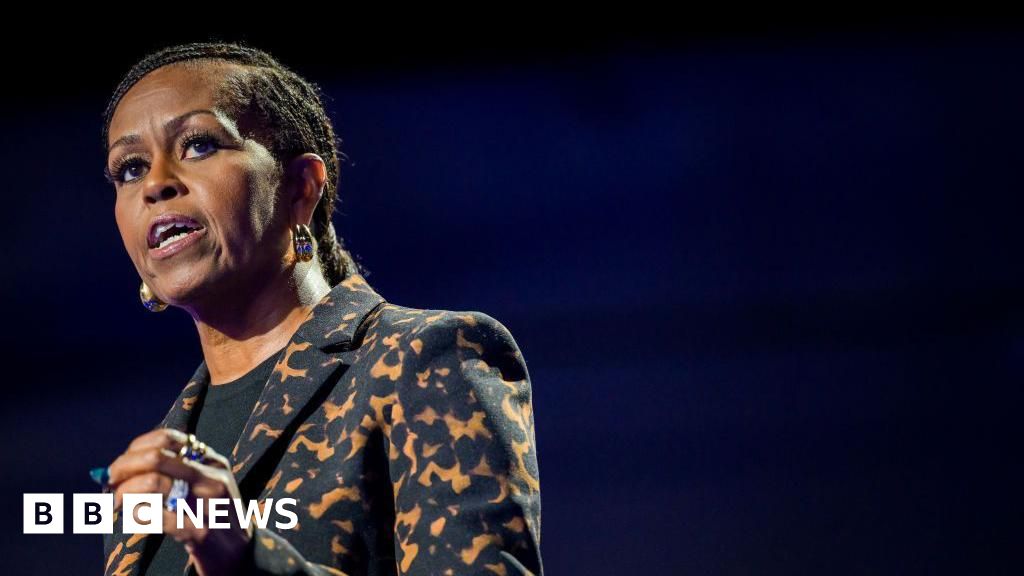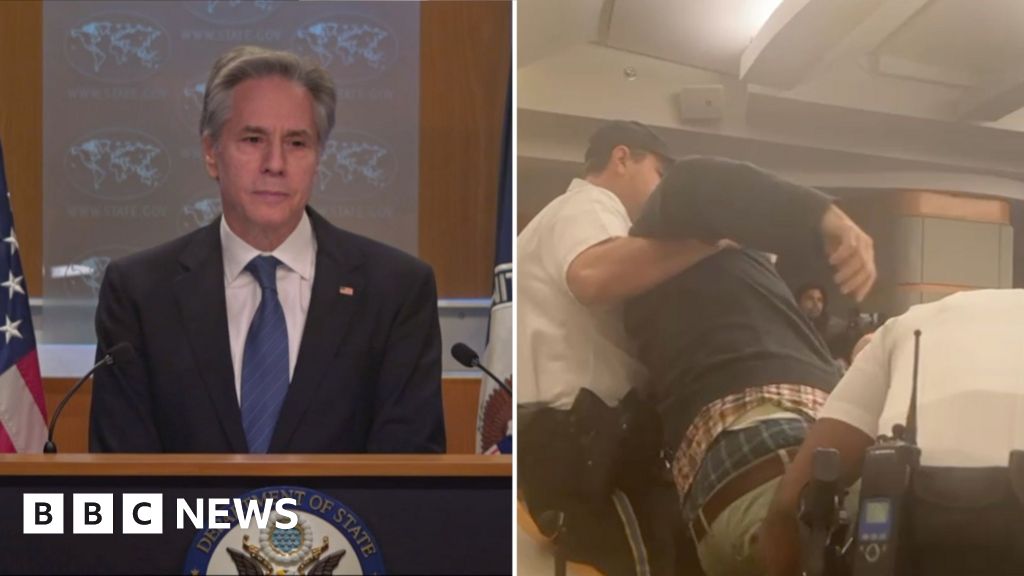ARTICLE AD BOX
Edward B Johnson, a CIA officer who helped to pull off the daring rescue of six US diplomats left in hiding in Iran after the 1979 Islamic Revolution, has died aged 81.
The operation, which caught the public's imagination after it was dramatised by Ben Affleck's 2012 Oscar-winning film Argo, saw a CIA team enter Iran undercover as Hollywood filmmakers.
Amid growing scrutiny of the CIA and its perceived lack of accountability, the agency encouraged Johnson's partner in the operation, Tony Mendez, to speak openly of the rescue in 1997.
But Johnson's own role remained classified for decades, and he was only identified only as "Julio" in a a book written by Mendez about the rescue.
In the CIA, however, Johnson's role in the plan was acknowledged. At the agency's headquarters in Langley, Virginia, a faceless painting celebrated his role in the operation.
Only in 2023 - over a decade after the release of Argo - was his contribution publicly recognised. A podcast released by the CIA which cast light on the operation - known as the Canadian Caper - included interviews with the Cold War-era spy.
“Ed’s legacy will continue to inspire those who walk the halls of Langley for generations to come," the agency said in a statement announcing his death on Monday.
Johnson was born in 1943 in Brooklyn, New York. After serving in the army during the Vietnam War, he moved to Saudi Arabia where he worked as an English teacher, before gaining a master's degree in French at the Sorbonne in 1971.
The specifics of his subsequent professional life remain largely unknown or classified. What little information that has been made public largely comes from a 2023 podcast - The Langley Files - which lifted the veil on some aspects of an intelligence career which spanned over two decades.
He joined the CIA as an officer with the agency's Office of Technical Services - a unit dedicated to supporting clandestine operations across the globe by designing gadgets, obtaining weapons and creating disguises and forging documents.
By the time of the Islamic Revolution in 1979 - which saw the regime of Shah Mohammad Reza Pahlavi overthrown amid mass strikes and demonstrations - Johnson was posted overseas.
“It was after after having gotten the on-the-ground experience in the Middle East and the educational experience and the language [came] into play... that I was considered to be a good candidate,” he later recalled.
On 4 November 1979, Islamist students supportive of the new Iranian regime scaled the fence of the US embassy in Tehran, taking dozens of staff hostage and sparking a 444-day hostage crisis.
Six diplomats managed to slip away and took refuge in the home of the Canadian ambassador. For about three months, they took refuge there, while US officials sought to concoct a plan to smuggle them out of the country.
Eventually, President Jimmy Carter approved the Canadian Caper - a plan which would see Mendez and Johnson pose as Canadian filmmakers scouting locations for a supposed Star Wars spin-off called Argo.
- CIA identifies second officer involved in 'Argo' mission
- The true story behind Ben Affleck's Oscar-winning film
- Tony Mendez, the real CIA spy behind Argo, dies aged 78
Mendez posed as an Irish filmmaker, while Johnson was “an associate producer representing [a] production company’s ostensible South American backers".
As with much of Johnson's career, his exact role in the plan and why he was chosen remain shrouded in mystery. But Mendez wrote in an internal CIA document that his partner had "considerable exfiltration experience” during the Cold War with the Soviet Union, without elaborating.
The pair arrived in Iran on 25 January 1980, where they were directed to the Canadian ambassador's residence by a student revolutionary patrolling outside the US embassy. The young man called a taxi for the pair and refused a tip after writing down directions.
“I have to thank the Iranians for being the beacon who got us to the right place,” Johnson later recalled.
Over the next several days, Johnson and Mendez worked with the stranded diplomats, providing them with fake passports, backgrounds, exit slips and even scripts for the film.
“The biggest thing I think we did was to convince them that you can, you can do it - as simple as that,” Johnson remembered.
"They were people who were not trained to lie to authorities. They weren’t trained to be clandestine, elusive,” he added, referring to the six as complete "rookies" when it came to his line work.
The team eventually slipped out of the country aboard a Swissair flight on 28 January 1980. Johnson was awarded an Intelligence Star, the CIA's second-highest award for valour. Publicly, credit went to the Canadian embassy for harbouring the diplomats, with the CIA's role kept secret.
Johnson retired from the agency in 1995 as the old tensions of the Cold War receded into memory, and worked as a contractor while exploring a growing interest in photography, his family said.
Two years later, the CIA was facing intense criticism for some of its activities abroad - which included backing coups - and a lack of accountability. One Democratic senator, Daniel Patrick Moynihan, was championing a long-running campaign to abolish the agency.
In response, Director George Tenet contacted Tony Mendez and encouraged him to tell the tale of his daring rescue of the diplomats. But Johnson's role remained a secret to the world.
“Even as the world celebrated his heroism, he remained a ghost, a figure shrouded in anonymity,” his family said on Monday. “For decades, his identity was a closely guarded secret. It was only in the twilight of his life that he finally emerged from the shadows, a legend in his own right.”
His son, Harold Johnson, said he died from complications related to Alzheimer's disease and pneumonia.
He is survived by his wife Aileen, five children and nine grandchildren.

 4 months ago
16
4 months ago
16








 English (US) ·
English (US) ·